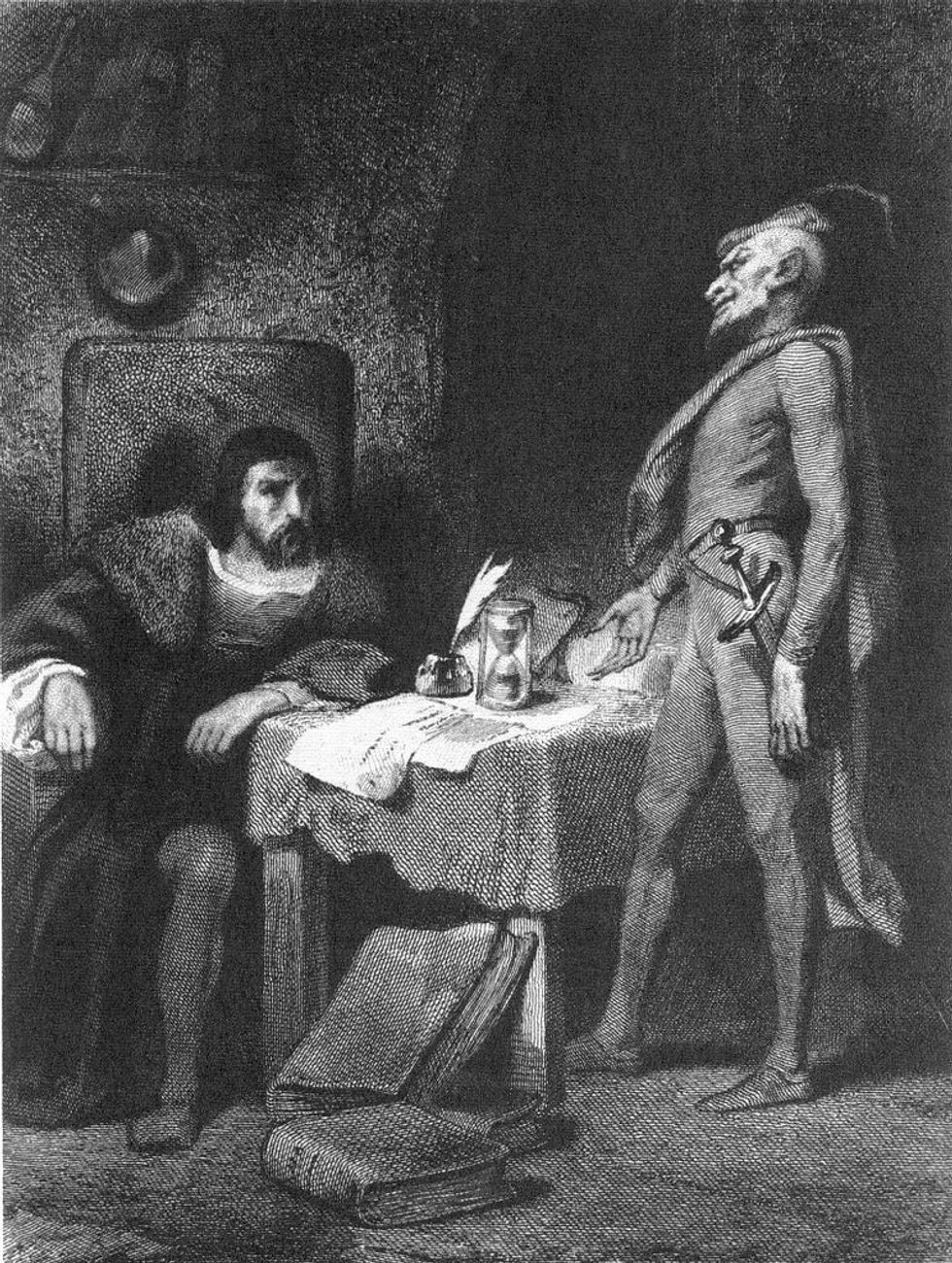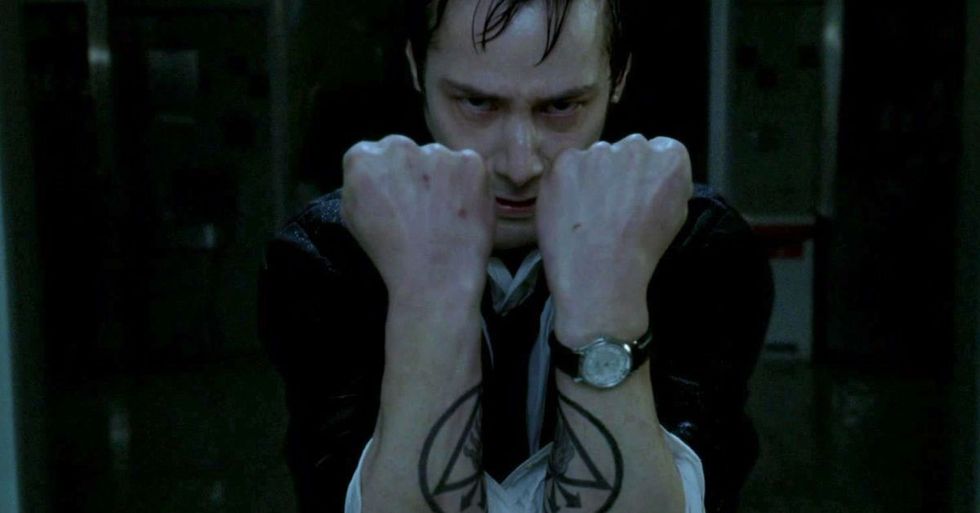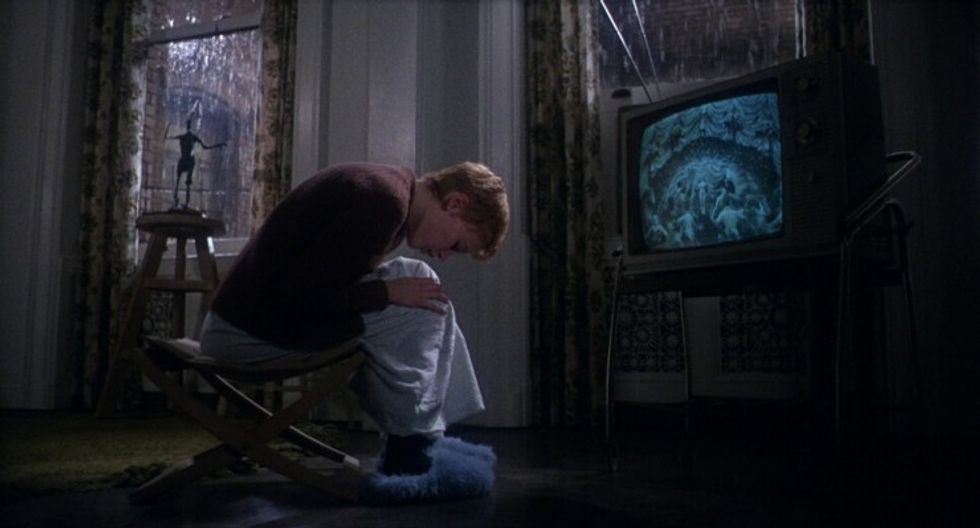What Exactly is a Deal With the Devil?
Learn how this popular plot trope works in film and TV.

The Devil's Advocate
One of the things I've started doing when writing is going over a list of plot devices that I haven't tried that I might want to use in my own work. This week, I have been playing around with making a deal with the devil.
Not the literal devil, my Catholic School upbringing would not allow it, and trust me, I have tried.
Rather, the idea of a Faustian deal inside the world story.
Let's dig a little deeper on this topic.
The Deal With the Devil Explained

Bedazzled
20th Century Studios
A Deal with the Devil is a popular cultural motif and narrative trope in which a character makes a pact with the Devil or a demonic figure in exchange for worldly desires like wealth, power, knowledge, fame, or other personal gains.
This pact typically involves the character sacrificing their soul or moral integrity, leading to dire consequences in the long run.
Faustian Plots

Faust and Mephisto
Wikimedia Commons
The legendary figure of Faust emerged from the historical Johann Georg Faust, a 16th-century alchemist, astrologer, and magician. While the historical Faust was known for his travels and claims of possessing various knowledge and skills, the legend surrounding him grew and transformed over time.
In the late 16th century, the first "Faustbuch" (Faust book) was published, compiling various tales and anecdotes about Faust's exploits. This book established the core elements of the Faust legend: a scholar who makes a pact with the Devil, represented by Mephistopheles, in exchange for knowledge and worldly pleasures.
The Faust legend gained immense popularity throughout Europe, inspiring numerous literary, dramatic, and musical adaptations. Christopher Marlowe's play "Doctor Faustus" (c. 1592) solidified Faust's image as a tragic figure who succumbs to temptation and faces eternal damnation.
Johann Wolfgang von Goethe's epic poem "Faust" (1808-1832) further elevated the legend, portraying Faust as a complex and conflicted character who yearns for more than earthly knowledge and experiences. Goethe's Faust is not simply damned for his pact with the Devil, but rather embarks on a journey of self-discovery and redemption.
The Faust legend has continued to resonate with audiences through the centuries, inspiring countless retellings and reinterpretations. It serves as a cautionary tale about the dangers of unchecked ambition, the pursuit of forbidden knowledge, and the temptation to make deals with evil forces for personal gain.
And thus, Faustian plots were born.
Faustian Plots
Faustian plots, named after the legendary figure of Faust, revolve around a character who makes a pact with the devil or a demonic figure in exchange for something they deeply desire, such as power, knowledge, wealth, or fame.
This pact typically involves sacrificing their soul or moral integrity in return for immediate gratification.
Key elements of a Faustian or Deal with the Devil plots include:
- Dissatisfaction and Ambition: The protagonist is often dissatisfied with their current life and harbors strong ambitions or desires. They seek a shortcut to achieve their goals, leading them to consider a dangerous bargain.
- Temptation and the Pact: The devil, representing temptation and forbidden knowledge, appears and offers a solution to the protagonist's problems through a pact. The pact's terms are often presented as a mutually beneficial arrangement, downplaying the potential negative consequences.
- Fulfillment and Success: Initially, the protagonist experiences a period of success and fulfillment after making the pact. They achieve their desired goals and revel in the rewards of their newfound power or wealth.
- Moral Decay and Consequences: As time passes, the protagonist begins to experience the negative consequences of the pact. Their relationships may suffer, their moral compass may erode, and they may become increasingly isolated or corrupted.
- Regret and Attempts to Escape: The protagonist eventually regrets their decision and seeks to escape the pact, but they often find themselves trapped by its terms. They may attempt to outsmart the devil or seek help from others, but their options are usually limited.
- The Reckoning: The story often culminates in a final reckoning, where the protagonist faces the ultimate consequences of their pact. This can involve losing their soul, experiencing eternal damnation, or facing a tragic downfall.
Beats in a Deal with the Devil Script

Constantine
Warner Bros.
If you're going to write one of the movies or TV shows, I highly recommend you start with a beat sheet. Seeing the beats all laid our will inform your character arcs and get you motivated.
These plots explore themes of temptation, ambition, moral compromise, and the consequences of unchecked desire.
They serve as cautionary tales about the dangers of seeking shortcuts to success and the importance of upholding one's values, even in the face of adversity.
Here's some things to take into account while writing:
- Temptation and Desire: The story often begins with a character facing a difficult situation, feeling unfulfilled, or harboring strong ambitions. The Devil, representing temptation and forbidden knowledge, appears and offers a solution to their problems through a pact.
- The Pact: The terms of the deal are outlined, often with a focus on the character's immediate desires. The Devil usually presents the pact as a mutually beneficial arrangement, downplaying the negative consequences and emphasizing the immediate rewards.
- Immediate Rewards: The character experiences a period of success and fulfillment after making the pact. They achieve their goals and enjoy the benefits of their newfound power or wealth.
- Hidden Costs: As time goes on, the character begins to realize the hidden costs of the deal. Their relationships may suffer, their morality may erode, and they may feel increasingly trapped by the pact.
- Desperation and Regret: The character becomes desperate to escape the deal, but finds themselves bound by its terms. They may try to outsmart the Devil or seek help from others, but their options are often limited.
- Consequences: The story often ends with the character facing the ultimate consequences of their deal. This can involve losing their soul, experiencing eternal damnation, or enduring a tragic downfall.
Examples of Dealing With the Devil in Movies and TV

Rosemary's Baby
Paramount
What I love about this plot device is that it shows up in big and small ways across movies and TV shows, to make your protagonist make a tough choice.
Let's look at a few examples.
Film:
- The Devil's Advocate (1997): A young lawyer joins a prestigious firm run by the Devil, tempted by wealth and power, only to realize the true cost of his success.
- Wall Street (1987): An ambitious stockbroker is seduced by the allure of wealth and insider trading, leading to his downfall and moral reckoning.
- Rosemary's Baby (1968): A young woman unknowingly becomes involved in a satanic cult's plot to conceive the Antichrist, highlighting themes of manipulation and sacrifice.
- Late Night With the Devil (2024): A viewer hungry late show host risks it all with his occultist affiliations, slowly revealed in a post-modern, satirical spin.
TV:
- Supernatural (2005-2020): This long-running series frequently features characters making deals with demons for personal gain, often with devastating consequences.
- Lucifer (2016-2021): The Devil himself becomes the protagonist in this series, exploring themes of redemption, free will, and the nature of good and evil.
- American Horror Story: Coven (2013): This season of the anthology series delves into the world of witches and the Faustian bargain for power and immortality.
Let me know what you think in the comments.
















